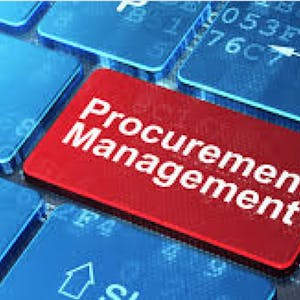Understanding Procurement: A Comprehensive Guide to Effective Business Practices
Introduction:
In the realm of business, procurement plays a vital role in ensuring the smooth operation and success of an organization. But what exactly is procurement? In this blog post, we will explore the concept of procurement, its significance, and its role in modern businesses. Whether you're a seasoned professional or a curious newcomer, this comprehensive guide will equip you with the knowledge to understand and optimize procurement practices.
What is Procurement?
Many time we hear word Procurement in organisation but can't know what is Procurement? exactly because we think Procurement means purchase or sourcing but that not true so today we explain Procurement in detail. Procurement refers to the process of acquiring goods, services, or works from external sources. It involves various activities such as sourcing, purchasing, negotiation, and contract management. Procurement is an essential function in both private and public sectors, enabling organizations to obtain the necessary resources to meet their operational needs. you can get more details please visit our website 👉 ipsolbaroda.com
Key Objectives of Procurement
Effective procurement is driven by several key objectives that contribute to the overall success of an organization. Let's explore these objectives:
Cost Efficiency: One of the primary objectives of procurement is to obtain goods and services at the best possible price without compromising quality. This includes negotiating favorable terms, seeking competitive bids, and identifying cost-saving opportunities.
Supplier Relationship Management: Building strong relationships with suppliers is crucial for procurement success. Maintaining healthy partnerships ensures timely delivery, reliable quality, and favorable terms. Effective supplier relationship management can lead to improved efficiency and long-term collaborations.
Quality Assurance: Procurement professionals strive to ensure that the goods and services acquired meet the required quality standards. Rigorous quality checks, supplier evaluations, and performance monitoring are essential to mitigate risks and maintain consistent quality levels.
Risk Mitigation: Procurement involves managing various risks, such as supply chain disruptions, price fluctuations, and supplier reliability. Developing risk management strategies and contingency plans are vital to minimize potential disruptions and protect the organization's interests.
Procurement Process Steps
While the procurement process may vary across organizations, it typically follows a series of common steps:
Identifying Needs: The procurement process begins by identifying the organization's needs and requirements for goods, services, or works. This includes determining quantity, quality, specifications, and budgetary considerations.
Supplier Sourcing: Once the needs are defined, the next step is to identify potential suppliers. This can involve conducting market research, issuing requests for proposals (RFPs), or leveraging existing supplier networks.
Supplier Evaluation and Selection: Evaluating suppliers based on predetermined criteria is crucial. Factors such as price, quality, reliability, capacity, and past performance are considered to make informed decisions. Selecting the right supplier ensures a successful partnership.
Negotiation and Contracting: Negotiating favorable terms and conditions is an essential part of the procurement process. This includes pricing, delivery schedules, payment terms, warranties, and other relevant contractual terms. The final agreement is formalized through a legally binding contract.
Order Placement and Fulfillment: Once the contract is in place, the procurement team places the order with the selected supplier. Monitoring the order fulfillment process ensures timely delivery and compliance with the agreed-upon terms.
Performance Evaluation: After the delivery of goods or completion of services, performance evaluation is conducted. This includes assessing the supplier's adherence to quality standards, delivery schedules, and overall customer satisfaction.
Conclusion:
Procurement is a vital business function that involves acquiring goods, services, or works from external sources. By understanding the objectives and following a well-defined procurement process, organizations can optimize their operations, reduce costs, and improve overall efficiency. Successful procurement requires effective supplier management, risk mitigation strategies, and a commitment to quality. Embracing best practices in procurement can contribute significantly to an organization's long-term success.


.jpeg)
.jpeg)
.jpeg)
.jpeg)
Comments
Post a Comment